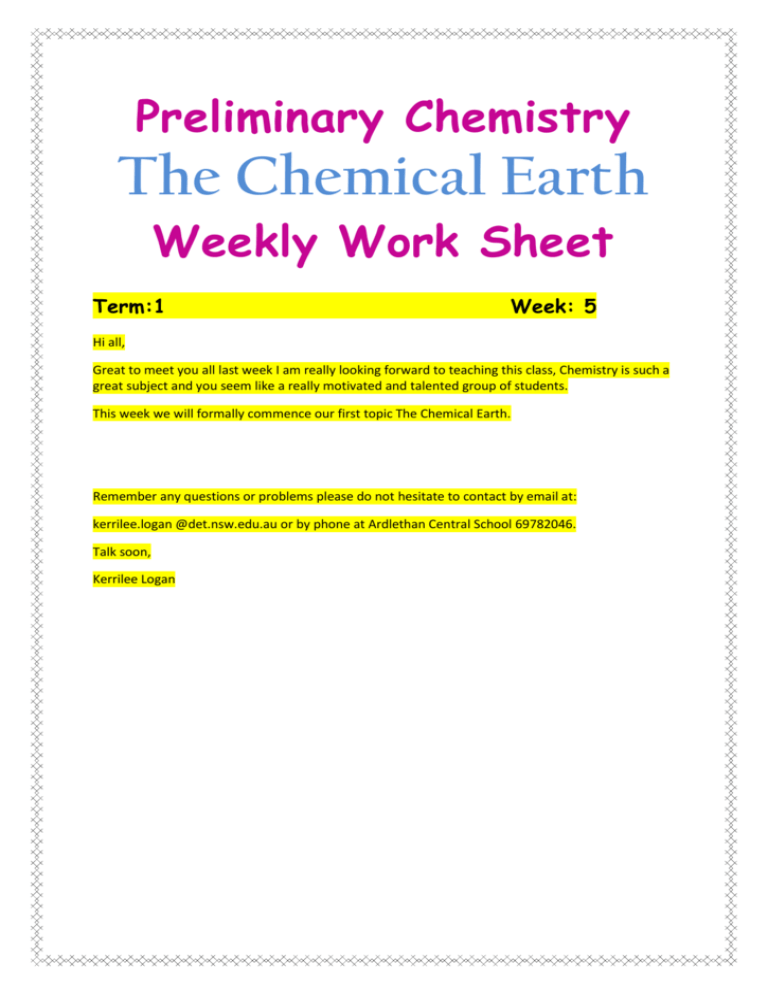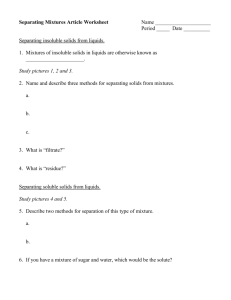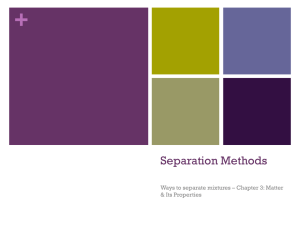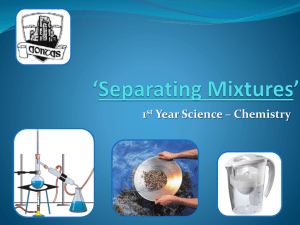Prelim Chemistry Term 1 Week 5 completed
advertisement

Preliminary Chemistry The Chemical Earth Weekly Work Sheet Term:1 Week: 5 Hi all, Great to meet you all last week I am really looking forward to teaching this class, Chemistry is such a great subject and you seem like a really motivated and talented group of students. This week we will formally commence our first topic The Chemical Earth. Remember any questions or problems please do not hesitate to contact by email at: kerrilee.logan @det.nsw.edu.au or by phone at Ardlethan Central School 69782046. Talk soon, Kerrilee Logan Syllabus area: 1. The living and non-living components of the Earth contain mixtures Students learn to: construct word and balanced formulae equations of chemical reactions as they are encountered identify and describe procedures that can be used to separate naturally occurring mixtures of: - solids of different sizes - solids and liquids - dissolved solids in liquids - liquids - gases assess separation techniques for their suitability in separating examples of earth materials, identifying the differences in properties which enable these separations describe situations in which gravimetric analysis supplies useful data for chemists and other scientists apply systematic naming of inorganic compounds as they are introduced in the laboratory identify IUPAC names for carbon compounds as they are encountered Students: gather and present information from first-hand or secondary sources to write equations to represent all chemical reactions encountered in the Preliminary course gather first-hand information by carrying out a gravimetric analysis of a mixture to estimate its percentage composition identify data sources, gather, process and analyse information from secondary sources to identify the industrial separation processes used on a mixture obtained from the biosphere, lithosphere, hydrosphere or atmosphere and use the evidence available to: - identify the properties of the mixture used in its separation - identify the products of separation and their uses - discuss issues associated with wastes from the processes used Your work: Obtain a copy of the text book Conquering Chemistry- Preliminary Course. Refer to Chapter 1: Mixtures, Elements and Compounds in the Earth Define the following terms sieving, sedimentation, decanting, evaporate to dryness, distillation, fractional distillation, immiscible, suspension Describe the method for separating: - solids of different sizes Seiving solids and liquids Sedimentation and Decanting, Filtration, dissolved solids in liquids Evaporation to Dryness, liquids Distillation, Fractional Distillation, Separating Funnel. Gases Fractional Distillation, Distillation. Describe what the process of gravimetric analysis involves The Separation of compounds and elements from mixtures and measuring weight and percentage of each substance in the mixture Complete worksheets attached/faxed Practical work: We will this week take the separation of sand, salt and water one step further and perform a gravimetric analysis on the mixture as describe in Investigation 1: Gravimetric Analysis Link Lesson Monday: Separating mixtures Have a great week, Kerrilee Logan









